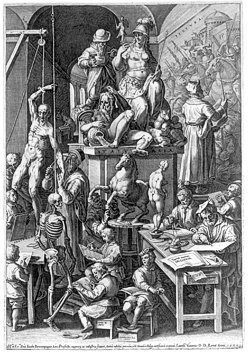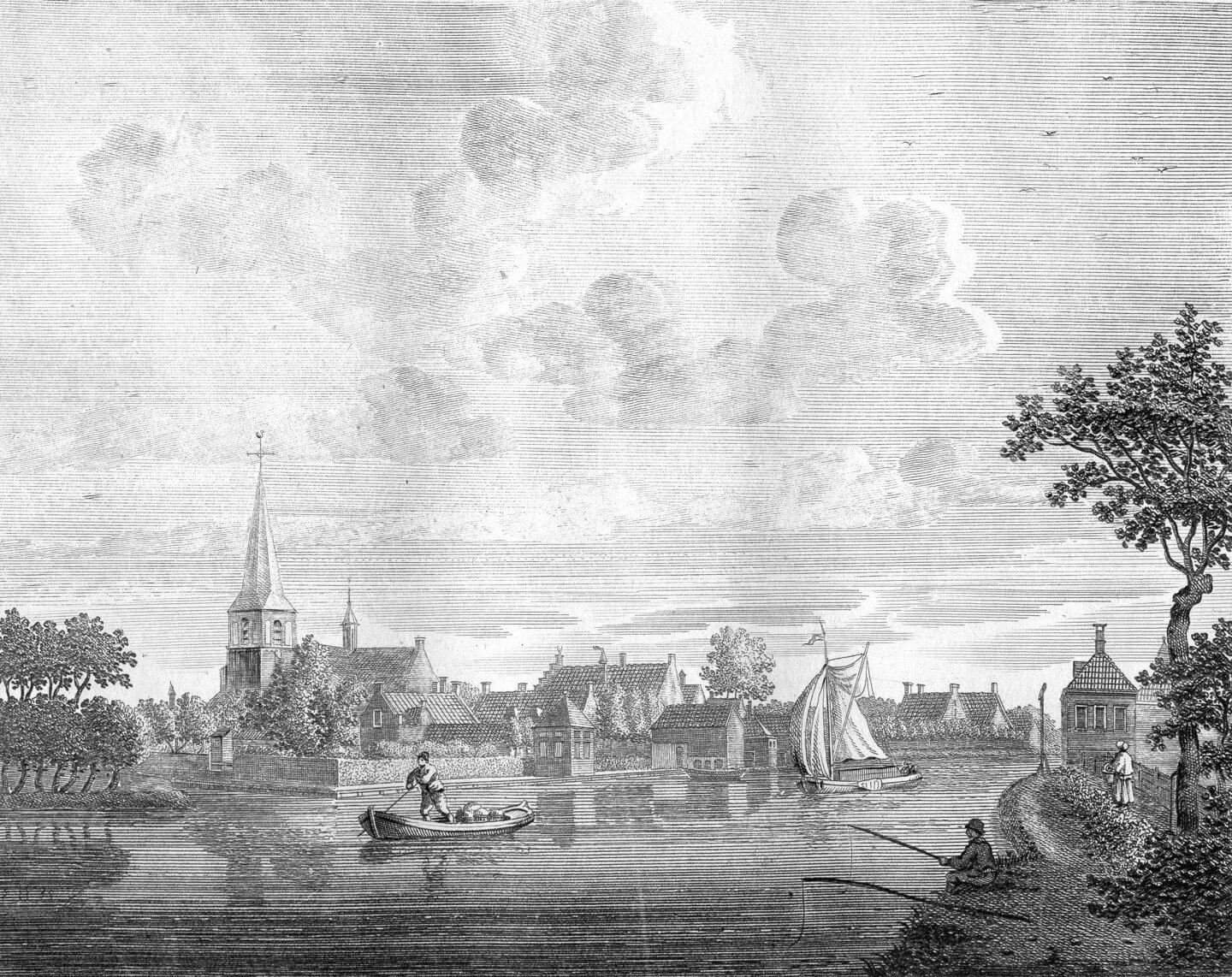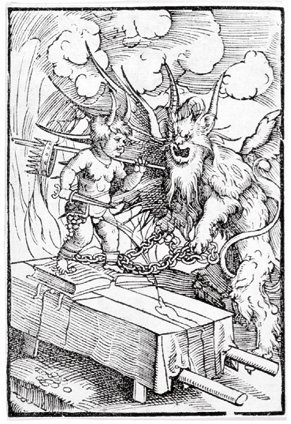
Stradanus was a member of the famous Accademia del Disegno in Florence from its establishment in 1563. From 1571 he worked as an independent master, moving to Naples in 1576. He returned to Florence in 1580, dying there in 1605. Stradanus was chiefly renowned in the Netherlands as a designer of prints. He started working with the Antwerp publisher Hieronymus Cock, who in 1570 published a series of prints after Stradanus's tapestries of hunting scenes for Cosimo I de' Medici.
Stradanus later worked mainly with Philips Galle, who published large series after his designs, such as another series of hunts, consisting of 105 prints, the Acts of the Apostles, two series of the Passion and Resurrection of Christ, and many others.
Of special interest are profane subjects such as the Nova reperta, depicting inventions of the modern era, the America retectio, on the discovery of the Americas, and the Horses of the Stable of Don Juan of Austria. One of the most famous loose prints is the Allegory of the Visual Arts engraved by Cornelis Cort in 1578. In addition to this one print by Cort, Stradanus's designs were engraved by some of the finest engravers of the second half of the sixteenth century, among them Hendrick Goltzius, Philips Galle and his sons, the Collaerts, the Sadelers and the Wierix brothers.
Compiled by M. Leesberg


